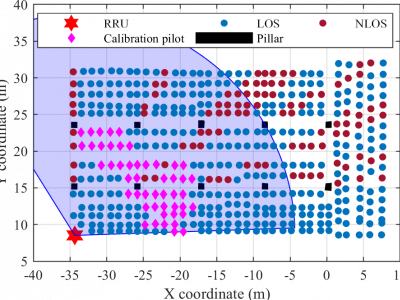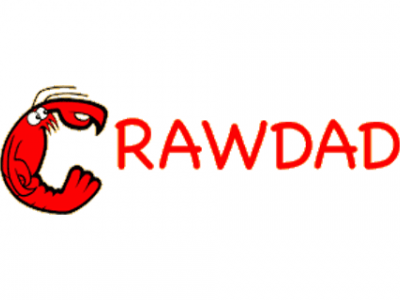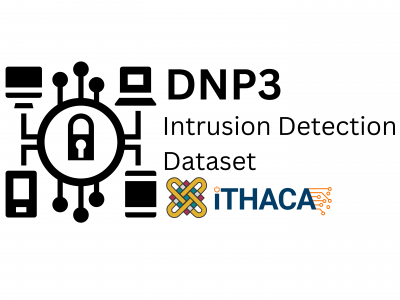Communications

This file contains real GNSS data collected from a suburban region to a dense urban region in Ottawa. For the interest of the work, only GPS data are collected. The data are collected using two Ublox GNSS units (receivers), namely EVK-M8T and EVK-M8U. EVK-M8T is a timing product that can provide precise timing information for post-processing. EVK-M8U is a product that features dead reckoning mode, making this product reliable even in urban canyons. The data are in the format of UBX, NAV, and OBS. The UBX file is outputed directly by the receiver using u-center (software).
- Categories:
 36 Views
36 Views
The data set contain network survey statistics from the county of Nottinghamshire for four major UK mobile operators. The data are collected from September 2022 till December 2022 and contain both 4G-LTE and 5G-NSA network information and their corresponding GPS location.
- Categories:
 113 Views
113 ViewsChannel frequency response (CFR) dataset used for "In-Situ Calibration of Antenna Arrays for Positioning With 5G Networks" paper (IEEE Transactions on Microwave Theory and Techniques, in print, doi: 10.1109/TMTT.2023.3256532, preprint link: https://arxiv.org/abs/2303.04470).
- Categories:
 2299 Views
2299 Views
Fifth Generation 5G cellular network users are increasing exponentially, where 5G coverage is a challenge for global telecommunications to provide end-users with maximum Quality of Experience (QoE). 5G technology New Radio (NR) is developed to address high bandwidth, low latency and massive connectivity requirements of enhanced Mobile Broadband (eMBB) compared to Fourth Generation (4G) Long-Term Evolution (LTE).
- Categories:
 1225 Views
1225 ViewsTraces of Bluetooth sightings by groups of users carrying small devices (iMotes) for a number of days.
This data includes a number of traces of Bluetooth sightings by groups of users carrying small devices (iMotes) for a number of days - in office environments, conference environments, and city environments.
All versions of this dataset, oldest to newest: v. 2006-01-31, v. 2006-09-15, v. 2009-05-29.
network type: bluetooth
- Categories:
 394 Views
394 ViewsThe Berlin V2X dataset offers high-resolution GPS-located wireless measurements across diverse urban environments in the city of Berlin for both cellular and sidelink radio access technologies, acquired with up to 4 cars over 3 days. The data enables thus a variety of different ML studies towards vehicle-to-anything (V2X) communication.
The data includes information on:
- Categories:
 4406 Views
4406 Views
The development in the automation sector and aircraft design has enabled enormous innovations in the urban aviation sector, which includes Advanced Air Mobility (AAM). AAM includes the on-demand air transportation of goods and passengers using the drone between aerodromes within Air Corridors. Air Corridors are an integral part of AAM, a performance-based controlled airspace where drones follow a specific set of protocols. This includes appointing the Skylane, route availability, traffic control, collision avoidance, etc.
- Categories:
 363 Views
363 ViewsFive users aged 23, 25, 31, 42, and 46 participated in the experiment. The users sat comfortably in a chair. A green LED of 1 cm diameter was placed at a distance of about 1 meter from a person's eyes. EEG signals were recorded using g.USBAmp with 16 active electrodes. The users were stimulated with flickering LED lights with frequencies: 5 Hz, 6 Hz, 7 Hz, and 8 Hz. The stimulation lasted 30 seconds. The recorded signals were divided into the data used for training, the first 20 seconds, and the data used for testing, the next 10 seconds, for each signal.
- Categories:
 691 Views
691 ViewsIn the digital era of the Industrial Internet of Things (IIoT), the conventional Critical Infrastructures (CIs) are transformed into smart environments with multiple benefits, such as pervasive control, self-monitoring and self-healing. However, this evolution is characterised by several cyberthreats due to the necessary presence of insecure technologies. DNP3 is an industrial communication protocol which is widely adopted in the CIs of the US. In particular, DNP3 allows the remote communication between Industrial Control Systems (ICS) and Supervisory Control and Data Acquisition (SCADA).
- Categories:
 4533 Views
4533 Views
Aiming the analytical modeling of Age of Information (AoI) and Peak-AoI, uploaded codes construct and solve analytical models for Non-preemptive Bufferless, Probabilistic Generate-at-will (GAW) and Random Arrival with Single Buffer (RA-SB) servers using the theory of absorbing Markov Chains. In particular, they output per-source PAoI/AoI distributions in a setting with general number of sources where the sources may have different (i) general phase-type service time distributions, (ii) packet error probabilities and (iii) arrival rates.
- Categories:
 331 Views
331 Views



